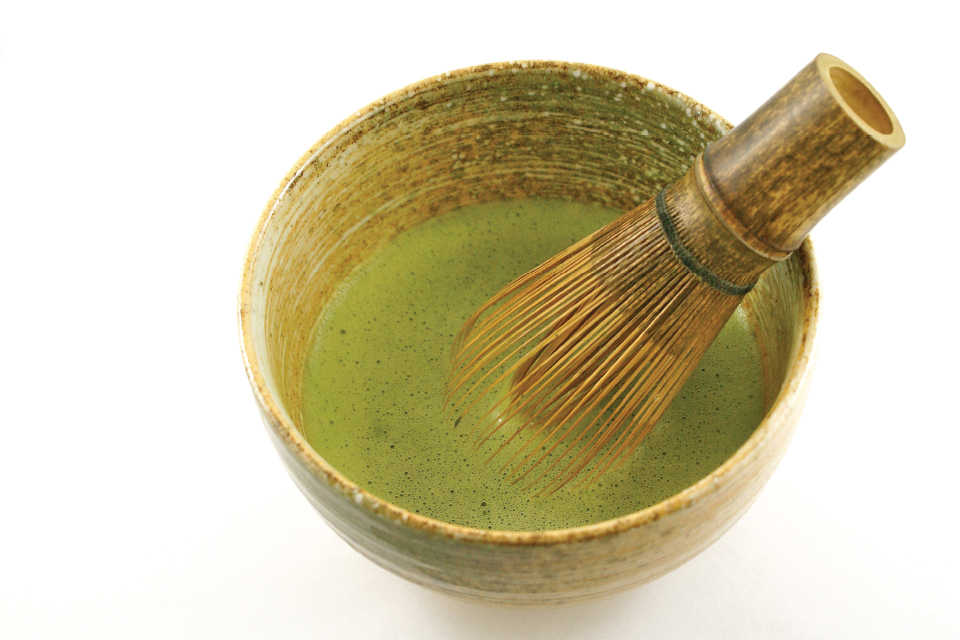Nutrition Trends for 2015

Goodbye quinoa, hello seaweed. Similar to fashion trends, what’s hot in the food and nutrition world changes from year to year. Industry insiders cast their predictions as early as October for the food and flavors about to make their way into the shopping carts, restaurants, and bellies of hungry consumers. Similar to years past, many of the forecasted food trends for 2015 focus on better health and reflect a growing interest in fueling the body with quality nutrition.
To help you navigate the grocery aisles in the months ahead, check out the list below for a few of this year’s healthiest predicted food trends (and their purported health benefit claims):
MATCHA TEA
The Japanese may be way ahead of the trend when it comes to drinking matcha tea, which has been consumed in traditional Japanese tea ceremonies since the 12th century. Matcha tea is made from finely milled or powdered green tea leaves and is mixed with water to create a frothy green brew rich in antioxidants. One such antioxidant called ECCG (or epigallo-catechin gallate) has been the subject of recent medical research studies and has been shown to lower cholesterol, protect against certain types of cancer, fight cellular damage, and even block the formation of plaques that lead to Alzheimer’s disease.
In the words of one nutrition scientist from Mount Sinai Hospital, green teas such as matcha “…are the healthiest thing I can think of to drink.” Look for this superfood to start cropping up in menus at specialty coffee and tea shops as it becomes more mainstream throughout the food-service industry.
BONE BROTH
We know what you’re thinking: broth as a food trend? Believe it or not, sipping on bone broth is having a moment—just think of it as the cold weather version of green juice. Broth made from animal bones has been surging in popularity, and proponents of bone broth claim it can improve immunity, reduce joint pain and inflammation, and improve gut health. Broth has become so popular in New York City that a recently opened broth-only cafe sells several varieties that cost upwards of $7 per cup.
While it’s true that bone broth can contain a variety of nutrients such as magnesium, potassium, calcium, amino acids, and collagen, there is little scientific evidence to support many of the health claims. However, broth is low in calories, and many studies have shown that broth-based soups can help dieters increase their satiety levels. There’s also research to support the healing benefits of chicken soup, and consuming extra fluids in the form of broth isn’t likely to hurt anyone. One word of caution: many store-bought bone broths are high in sodium (and in price!), so it may be worth the time to make your own at home.
 FERMENTED FOODS
FERMENTED FOODS
What do sauerkraut, kombucha, and kimchi all have in common? Besides their unusual names, the aforementioned foods are all made using the fermentation process. This method of preserving and preparing food usually results in an abundance of probiotic bacteria (a type of microorganism that can improve gastrointestinal health).
The benefits don’t stop at healthy intestines, though. Increasing evidence suggests that the condition of your gut can affect nutrient absorption, inflammation, and even your weight. While the prevalence of fermented foods has been increasing for some time, expect to see even more fermented and pickled flavors hit store shelves in the coming months.
COCONUT SUGAR
Americans seem to be nuts for coconuts, as evidenced by the popularity of coconut water and coconut oil in the marketplace. So it makes sense that coconut sugar is poised to be the next coconut-related food product to take the grocery store by storm. And with good reason—when compared to table sugar, coconut sugar contains more nutrients and a lower glycemic index score (a measure of how quickly a food raises blood sugar). This makes coconut sugar a great choice for diabetics and those trying to watch their weight. Several studies have shown that consuming a low glycemic diet may be better for the body’s metabolism and could help prevent many chronic diseases.
Before you give coconut sugar the green light in your kitchen though, note that most dietitians and doctors recommend using coconut sugar sparingly and limiting your overall sugar intake—no matter what the source.
SEAWEED SNACKS
Nicknamed the “kale of the sea,” seaweed snacks and other seaweed-based foods hold an ocean of health benefits for those brave enough to try them. And with a name like “seaweed,” it can be difficult to persuade someone to look beyond this food as more than a sushi roll staple. However, seaweed is chock full of nutrients such as iodine, potassium, iron, calcium, vitamin A, vitamin C, and protein while being low in calories, making it a dietary win-win.
But what about taste? Enter ambitious food manufacturers eager to cash in on the growing health consciousness of consumers, and you get seaweed in snack form. Taking a tip from Asia (which has been consuming seaweed as a snack along with eating it in salads, sushi, and soups), several companies have experimented with drying and roasting sheets of seaweed while adding flavors ranging from wasabi to coconut. The end result is a tasty, nutrient-rich snack perfect for those seeking a substitute for potato chips or other snacks beset by low nutritional value. Though seaweed snacks are far from mainstream, stores such as Whole Foods, Trader Joe’s, and Central Market have started carrying seaweed snacks and other seaweed foods for those interested in giving them a try.
All in all, 2015’s hottest food and nutrition trends can help you stay fit while retaining your foodie status. Gone are the days of suffering through boring salads or tasteless food in the name of keeping yourself in shape. So raise a glass of kombucha, and cheers to a hip and healthy new year!






